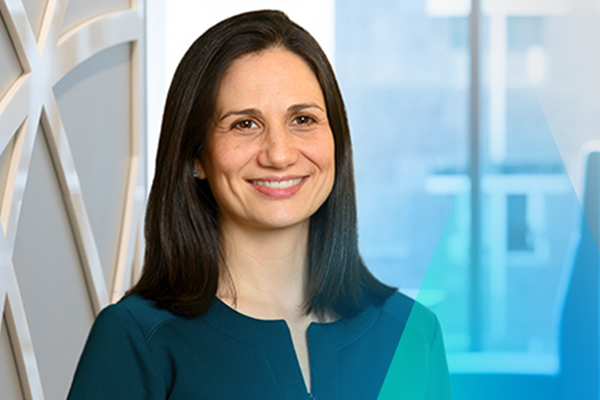New Medicare Incentives Encourage Accountable Care Organizations To Assume Greater Risk
Summary
Avalere simulation finds that more ACOs will be eligible for earnings if they take on two-sided risk.New research from Avalere finds that accountable care organizations (ACOs) participating in the Medicare Shared Savings Program (MSSP) would have earned an additional net payments of $886M in 2015 if they had assumed greater financial risk under the program and had qualified for the 5% bonus payment now available under the Quality Payment Program (QPP).
“CMS’ new value-based payment incentives really tip the scales for doctors to assume greater financial risk,” said Josh Seidman, senior vice president at Avalere. “For those physicians who were dipping their toes in the water with low-risk ACO models, the incentives now make it advantageous for a majority of them to move more aggressively into greater accountability for population health.”
Most MSSP ACOs participate in Track 1, under which they do not bear downside financial risk (i.e., are not responsible for repaying “shared losses” to the Medicare program). MSSP ACOs participating in Tracks 2 or 3, while eligible for greater shared savings payments, also are responsible for repaying a portion of shared losses back to CMS. In 2017, 486 MSSP ACOs are participating in Track 1, six are participating and Track 2, and 36 are participating in Track 3.
In an effort to increase the portion of Medicare payments tied to the quality and value of care, new incentives from the Centers for Medicare & Medicaid Services (CMS) have been put in place to encourage ACOs to bear more financial risk. In particular, under the QPP, ACOs that assume downside risk are classified as advanced alternative payment models (AAPMs), which will qualify them to earn a lump-sum bonus payment equal to 5% of their Part B expenditures. Moreover, ACO payment models already provide risk-bearing ACOs an opportunity to earn a greater percentage of shared savings than their non-risk-bearing counterparts.
Using ACO performance data under the MSSP in 2015, Avalere experts simulated how Track 1 (non-risk-bearing) ACOs would have performed if they had assumed risk under the Track 2 ACO model (two-sided risk) and were eligible for a 5% AAPM bonus payment. Avalere’s analysis found that most ACOs would have financially benefited from bearing risk—79% (307) of Track 1 ACOs would have financially benefited versus 21% (82 ACOs) that would have generated net losses overall.
Overall, ACOs would have seen a $1.1B increase in payments from the 5% AAPM bonus and a $178 million increase from the greater percentage of shared savings and lower minimum savings rate (MSR) for risk-bearing Track 2 ACOs (see Figure 1). Although some ACOs would have had to repay CMS in shared losses for spending above their benchmark, about one third of these ACOs would have offset their losses by the AAPM bonus payment provided under the QPP.
In addition to the 5% AAPM bonus payment under the QPP, CMS has continued to improve the financial risk/reward trade-off for ACOs to take on two-sided risk. In June 2016, CMS established a new method incorporating regional spending to determine MSSP ACO benchmarks. Avalere found that more ACOs would have financially benefited if the new ACO benchmarks were applied (see Figure 2). Even without the AAPM bonus payment, about 33% more Track 1 ACOs would have benefited from switching to Track 2. Factoring in the AAPM bonus payment, nine more MSSP Track 1 ACOs would have benefited from switching to Track 2 under the regional bench-marking method.
“On balance, the 2016 changes to the payment methodology will support efficient ACOs,” said John Feore, director at Avalere. “This could spur more ACOs to accept downside risk, creating a more sustainable Medicare ACO market.
Methodology
Analyzing ACO performance data under the MSSP in 2015, Avalere simulated how non-risk-bearing (Track 1) ACOs would have performed if all of them had instead taken on risk under the Track 2 ACO model and were eligible for the AAPM bonus payment. Analysis includes 389 ACOs participating in the Medicare Shared Savings Program (MSSP) with performance data available in 2015 under Track 1 but did not include the three ACOs that were participating under Track 2.
Specifically, in shifting to Track 2, all ACOs were assumed to have a minimum savings rate (MSR) and a minimum loss rate (MLR) of 2% and -2%, respectively. The total maximum sharing rate was set at 60% and was influenced by the ACO’s quality score captured in the data set. Bonus payments under the QPP’s AAPM track were determined by taking 5% of physician/supplier expenditures captured in the PUFs.
To determine the impact of the new regional rebasing method, Avalere used the ACO PUF, county-level Medicare FFS spending data, and ACO enrollment data by county. For ACOs spending less relative to their region, the benchmark was increased by 35% of the difference between ACO spending and regional spending. Conversely, for ACOs spending more relative to their region, the benchmark was decreased by 25% of the difference between ACO spending and regional spending. While the rebasing analysis computes the added regional adjustment factor, regional growth trend was not factored into the estimate.









